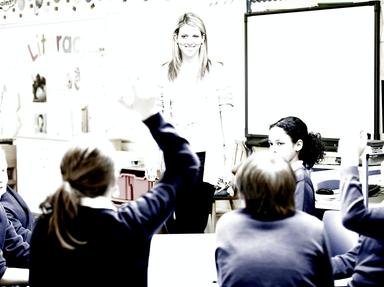Quiz Answer Key and Fun Facts
1. William McGuffey was a professor at Miami University in Oxford, Ohio, when he began work on something that would become a staple for public schools in the late 1800s. What is it?
2. Jaime Escalante was a teacher in California who was initially assigned a class of badly behaved pupils from a poverty stricken background. Instead of giving up, Escalante had them (and their successors) take and pass what Advanced Placement test subject?
3. This man was born into slavery. After emancipation, he worked himself through college and became the principal developer of Tuskegee University and a spokesman for Black Americans in the early 1900s. Who is he?
4. Hanan Al Hroub has spent her life in an area surrounded by chaos. She took those lessons to the classroom where she utilized the slogan "No To Violence". Her tactics won her the 2016 Global Teacher Prize. What country does she represent?
5. Aristotle was a philosopher who helped found the idea that the role of a teacher was extremely important as teachers were the ones would guide the children into their knowledge and behavior.
True or False: Aristotle was a key member of the Roman society.
6. Emma Willard opened a school in Troy, New York, in 1821. She was an advocate for education of a certain part of society. Upon whom did she focus?
7. Randy Pausch was a professor at Carnegie Melon University in Pennsylvania. He specialized in computer science and human-computer interaction. He also gave a famous speech at the school, which later turned into a worldwide bestseller. What was the title?
8. Anne Sullivan spent her youth in an almshouse for the destitute. She would grow up to become a worldwide famous teacher, tutor, and friend to a deaf-blind-mute person. Who was her student?
9. Friedrich Froebel was a German educator who opened the first kindergarten in the world.
10. Which Maria was an Italian physician and educator who opened a string of schools bearing her last name, as well as a teaching methodology?
Source: Author
stephgm67
This quiz was reviewed by FunTrivia editor
ponycargirl before going online.
Any errors found in FunTrivia content are routinely corrected through our feedback system.
